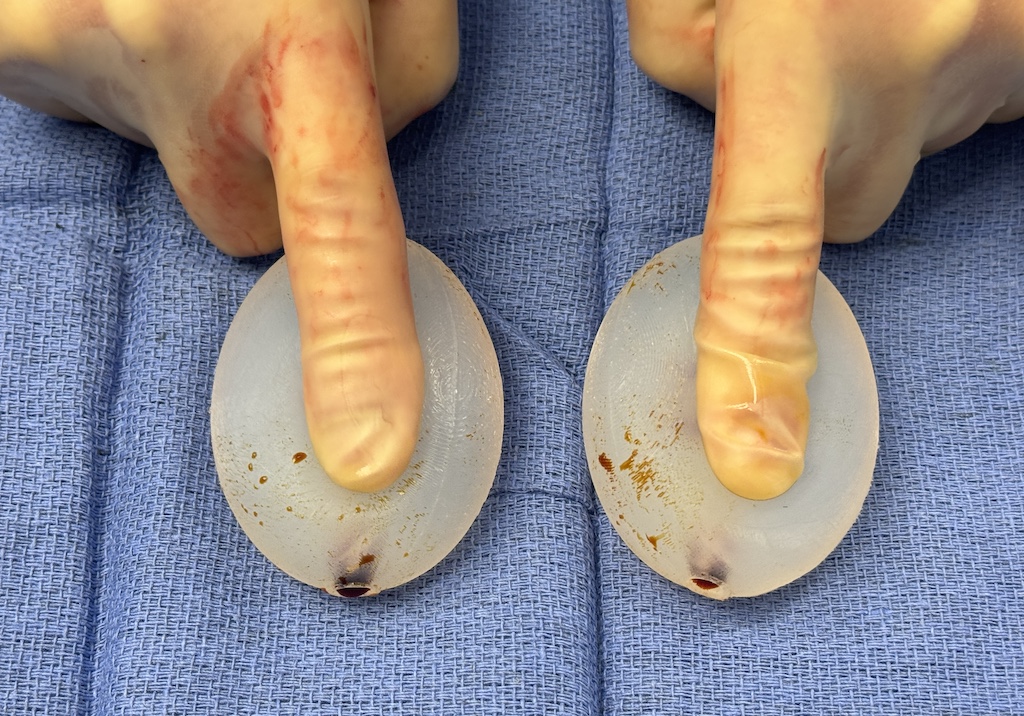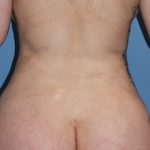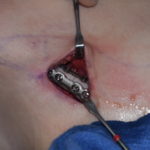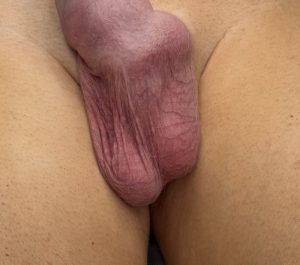Background
In older males with erectile dysfunction, a penile prosthesis combined with testosterone replacement therapy can produce notable improvements. However, this benefit comes with a trade-off — progressive testicular atrophy. Testosterone accelerates the natural age-related reduction in testicular size, and when penile length is increased, the contrast makes the testicles appear even smaller. The result is a penile–scrotal disproportion (PSD) of both iatrogenic and age-related origin.
The only definitive treatment for PSD, especially in patients with a penile prosthesis, is the use of custom testicle implants. Standard implant sizes (up to 5.0 cm) are usually inadequate; most cases require implants of 6.0 cm or larger. At these larger dimensions, the implant must be made as soft as possible, achieved through low-durometer silicone, implant design modifications, or both.
When placing testicle implants in the presence of a penile pump, the scrotum must accommodate five components:
-
Two natural testicles
-
The penile pump
-
Two custom testicle implants
This is possible because of:
-
The loss of natural testicular volume
-
Increased scrotal laxity with age
-
Additional stretching of scrotal skin from prior penile prosthesis surgery and postoperative swelling
Despite this capacity, implant size must be chosen carefully to avoid jeopardizing the penile pump.
Case Study
An older male with a history of prostatectomy had received a penile prosthesis and high-dose testosterone replacement therapy. He presented with significant PSD. On examination, the two atrophic testicles were positioned laterally in the scrotum, with the penile pump located centrally.
Surgical Procedure:
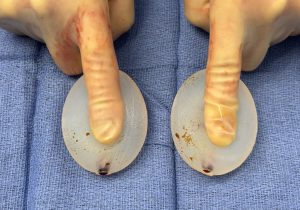
-
Maintaining a central septum of soft tissue between the two implant pockets.
-
Avoiding violation of the penile pump capsule.
-
Displacing the natural testicles superiorly.
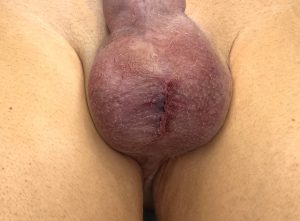
Surgical Principles for Optimal Results
The side-by-side custom testicle implant technique is the only logical approach for the aesthetic correction of PSD in the presence of a penile prosthesis. While conceptually straightforward, success depends on multiple technical factors:
-
Selecting an implant size sufficient for adequate displacement.
-
Ensuring the implant is soft enough for comfort and natural feel.
-
Performing precise pocket dissection to avoid damaging the penile pump capsule.
-
Positioning the pocket low enough to allow the natural testicles to displace upward and backward.
-
Preserving a midline septum of soft tissue to keep the implant pockets separate.
Failure to meet all five criteria compromises the aesthetic outcome. The most critical principle is preserving the penile pump capsule to prevent infection and chronic seroma.
Key Points
-
Penile–scrotal disproportion (PSD) is most common in older males with a penile prosthesis-pump and age- or hormone-related testicular atrophy.
-
The side-by-side custom testicle implant technique creates a scrotum with five anatomical components.
-
When a penile pump is present, the primary surgical priority is to avoid violating its capsule.
Dr. Barry Eppley
World-Renowed Plastic Surgeon

